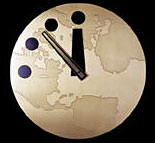This is a book review – of sorts. I’m not going to tell you anything other than that I love this book. And I’m going to give you an excerpt. Read it and make up your own mind….
————————————
You invest so much in it don’t you? It’s what elevates you above the beasts of the field, it’s what makes you special. Homo sapiens, you call yourself. Wise man. Do you even know what it is, this consciousness you cite in your own exaltation? Do you even know what it’s for?
Maybe you think it gives you free will. Maybe you’ve forgotten that sleepwalkers converse, drive vehicles, commit crimes and clean up afterward, unconscious the whole time. Maybe nobody’s told you that even waking souls are only slaves in denial.
Make a conscious choice. Decide to move your index finger. Too late! The electricity’s already half way down your arm. Your body began to act a full half-second before your conscious self “chose” to, for the self chose nothing; something else set your body in motion, sent an executive summary – almost an afterthought – to the homunculus behinds your eyes. That little man, that arrogant subroutine that thinks of itself as the person, mistakes correlation for causality: It reads the summary and it sees that hand move, and it thinks that one drove the other.
But ‘s not in charge. You’re not in charge. If free will even exists, it doesn’t share living space with the likes of you.
Insight, then. Wisdom. The quest for knowledge, the derivation of theorems, science and technology and all those exclusively Human pursuits that must surely rest on a conscious foundation. Maybe that’s what sentience would be for – if scientific breakthroughs didn’t spring fully formed from the subconscious mind, manifest themselves in dreams, as full-blown insights after a deep night’s sleep. It’s the most basic rule of the stymied researcher: stop thinking about the problem. Do something else. It will come to you if you just stop being conscious of it.
Every concert pianist knows that the surest way to ruin a performance is to be aware of what the fingers are doing. Every dancer and acrobat knows enough to let the mind go, let the body run itself. Every driver of any manual vehicle arrives at destinations with no recollection of the stops and turns and roads traveled in getting there. You are all sleepwalkers, whether climbing creative peaks or slogging through some mundane routine for the thousandth time. You are all sleepwalkers.
Don’t even try to talk about the learning curve. Don’t bother citing the months of deliberate practice that precede the unconscious performance, or the years of study and experiment leading up to the gift-wrapped eureka moment. So what if your lessons are all learned consciously? Do you think that proves there’s no other way? Heuristic software’s been learning from experience for over a hundred years. Machines master chess, cars learn to drive themselves, statistical programs face problems and design the experiments to solve them and you think that the only path to learning leads through sentience? You’re stone Age nomads, eking out some marginal existence on the veldt – denying even the possibility of agriculture, because hunting and gathering was good enough for your parents.
Do you want to know what consciousness is for? Do you want to know the only real purpose it serves? Training wheels. You can’t see both aspects of the Necker cube at once, so it lets you focus on one and dismiss the other. That’s a pretty half-assed way to parse reality. You’re always better off looking at more than one side of anything. Go on, try. Defocus. It’s the next logical step.
Oh, but you can’t. There’s something in the way.
And it’s fighting back.
* * *
Evolution has no foresight. Complex machinery develops its own agendas. Brains – cheat. Feedback loops evolve to promote stable heartbeats and then stumble upon the temptation of rhythm and music. The rush evoked by fractal imagery, the algorithms used for habitat selection, metastasize into art. Thrills that once had to be earned in increments of fitness can now be had from pointless introspection. Aesthetics rise unbidden from a trillion dopamine receptors, and the system moves beyond modeling the organism. It begins to model the very process of modeling. It consumes ever-more computational resources, bogs itself down with endless recursion and irrelevant simulations. Like the parasitic DNA that accretes in every natural genome, it persists and proliferates and produces nothing but itself. Metaprocesses bloom like cancer, and awaken, and call themselves I.
——————————————-
– from Blindsight  by Peter Watts
by Peter Watts

